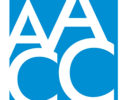Report roundup
By AACC 21st Century Center Staff
May 23, 2019
A monthly roundup of reports of interest to the community college sector.
Here are three reports you should know about this month.
- Community college students are fairly optimistic around their futures, according to the inaugural Cengage Student Opportunity Index. The survey found 78 percent of students pursuing an associate degree are optimistic about their future, compared to 85 percent of students pursuing a bachelor’s degree. Breaking it down, 31 percent of community college students said very optimistic about their future, 47 percent said somewhat optimistic, 17 percent said somewhat not optimistic, and 5 percent said not at all optimistic. Other findings: 88 percent of associate-degree students are very or somewhat confident that they will land a job related to their academic major within six months of graduating. Fifty-two percent of those who recently earned an associate degree are currently working in a job related to their educational background.
- Inadequate funding of community colleges has an impact on degree completion. So what can be done? In a recent report, The Century Foundation (TCF) recommends that states “immediately begin to increase community college funding in order to boost opportunities for students.” TCF also calls for “the creation of a new federal–state partnership for community colleges in which states must agree to do their part in order to qualify for new federal investments in two-year institutions,” and for more research to determine the costs to provide a strong community college education. The report includes data on spending levels between two-year and four-year institutions and the socioeconomic distribution of students at postsecondary institutions.
- A new brief from The Institute for College Access & Success (TICAS) echoes the TCF report: If state and federal policymakers want to increase college completion rates among minority students, increasing funding for community colleges and regional universities is a good place to start. Racial disparities in completion are due, in part, to the fact that public colleges, which disproportionately enroll underrepresented students of color, receive less funding and have lower graduation rates, the brief said. To foster change, TICAS recommends policymakers gather better data and track changes over time to more effectively close equity gaps. States also can better target state funds based on need.



